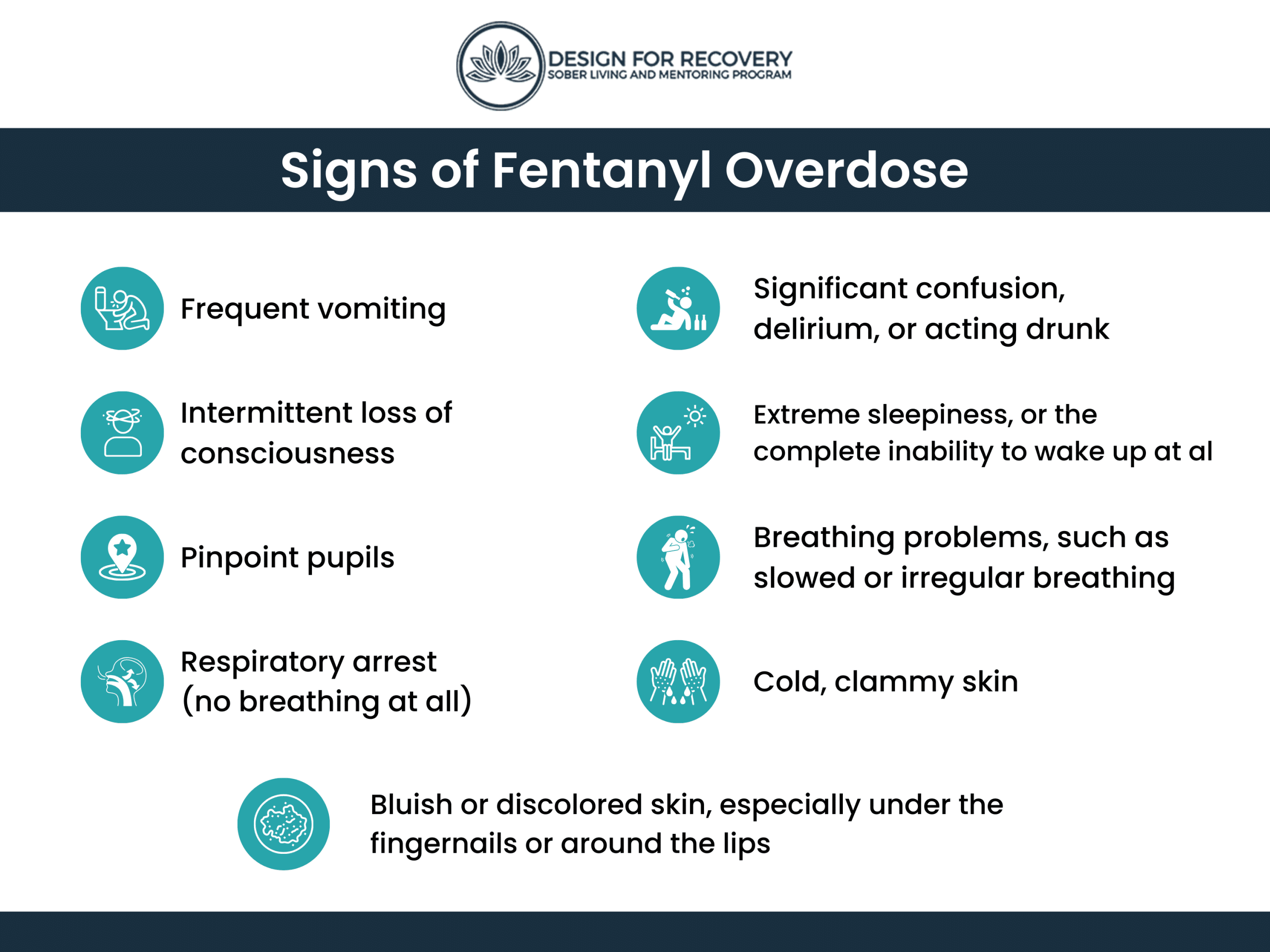What is Fentanyl?
Fentanyl is an opioid that is available legally via prescription. Opioids are a class of drugs that activates opioid receptors in the brain and throughout the body. When these receptors are activated, the result is a significant lessening of pain signals and an increase in feelings of euphoria.
Fentanyl Lollipops, and other prescription opioid medications, are used as analgesics, otherwise known as pain relievers. While most opioids have historically been derived from the opium poppy plant, fentanyl is a lab-produced synthetic opioid. As such, it is significantly stronger than natural and semisynthetic opioids.
Fentanyl is 50-100 times stronger than morphine. For this reason, a fentanyl prescription is intended only for people with breakthrough cancer pain, severe and chronic pain. Unfortunately, this addictive substance is currently heavily overprescribed, resulting in high rates of fentanyl abuse throughout the United States.
What Are Fentanyl Lollipops?
While the transdermal fentanyl patch is the most frequently prescribed type of fentanyl, the fentanyl lollipop is also common. While the fentanyl patch is used to release steady doses of fentanyl over the course of a day, the fentanyl lollipop, which contains flavoring as well as fentanyl citrate, is a quick-acting form of fentanyl.
Users hold it in their mouths and absorb the fentanyl rapidly under their tongues. This form of medication is often utilized to treat breakthrough chronic pain. It is also the form of fentanyl most widely used by military medics to treat injuries and trauma.
Fentanyl lollipops are available by prescription under the brand name Actiq. However, they are also frequently produced in illicit labs. While fentanyl lollipops are less widely available than fentanyl patches, they are in higher demand as recreational drugs due to the ease with which they can be abused.
Abusing a fentanyl patch generally requires scraping off the psychoactive sticky substance and taking the time to make that palatable. However, fentanyl suckers require no such tampering. Fentanyl lollipop street prices range from $15 to $40 per sucker.
However, many people who regularly abuse fentanyl lollipops use perfectly legitimate prescriptions, partly due to illegal marketing practices by pharmaceutical companies.
These marketing practices have resulted in skyrocketing prescription rates, with many doctors offering heavy-duty fentanyl lollipop prescriptions when a far less potent (and less risky) painkiller would be sufficient.
Fentanyl Abuse: Risks of Fentanyl Lollipops
Fentanyl lollipops release high doses of fentanyl during a very short period of time. The result is that recreational users and prescription-takers experience euphoria, known as a “high.” Aside from euphoria, fentanyl’s side effects include drowsiness, constipation, nausea, confusion, and sedation.
Unfortunately, the high doses that people experience on a fentanyl lollipop are also more likely to lead to the development of physical dependence and addiction.
When people are physically dependent on fentanyl, and other opioids, stopping use very quickly results in fentanyl withdrawal, an experience that can be excruciatingly painful.
Most suffering from dependence and addiction are willing to do anything to avoid fentanyl withdrawal, resulting in the desperate behavior characteristic of addiction. Fentanyl lollipop abuse can, over time, cause people to experience significant interpersonal problems, economic hardship, and health issues. The greatest risk of fentanyl lollipop abuse, however, is fentanyl overdose.
Call Design for Recovery to Begin Your Healing Journey!
Reach out to our team to discuss sober living options and next steps toward a healthier routine.
Signs and Symptoms of Fentanyl Addiction
People who develop fentanyl addictions suffer from a condition known as an opioid use disorder. The DSM-V, the manual that psychiatrists use to diagnose individuals with disorders, defines opioid use disorders by listing 11 associated symptoms. Addiction manifests itself via different symptoms for every person, so not everyone suffers from every single one of the best symptoms of opioid addiction. Fentanyl addiction is best thought of as a spectrum disorder. People who become addicted to fentanyl lollipops are likely to experience the following symptoms:
- Taking more fentanyl, or spending more time taking fentanyl, than originally intended
- Having a strong ongoing desire to stop abusing fentanyl or cut down on use but being unable to do so
- Spending a significant portion of one’s time, energy, and money to obtain fentanyl, abuse fentanyl, or recover from fentanyl use disorder
- Experiencing strong urges or cravings to use fentanyl
- Due to ongoing fentanyl abuse, being unable to meet obligations at work, home, or school adequately
- Despite the fentanyl abuse causing problems, continuing to abuse fentanyl
- Withdrawing from work, social, recreational, or other opportunities to abuse fentanyl
- Continuing to abuse fentanyl despite awareness of being in danger, such as driving under the influence of fentanyl
- Continuing to use fentanyl even when it is causing or exacerbating a physical or psychological problem
- Developing a tolerance to fentanyl, whereby a person needs greater quantities of the drug to experience the high to which they are accustomed
- Suffering from withdrawal symptoms when fentanyl use stops or the dosage is decreased
The Greatest Risk: Fentanyl Overdose
Due to the quick-release nature of fentanyl lollipops, users are particularly susceptible to opioid overdose. Since 1998, when the fentanyl lollipop was released on the market, the rates of opioid overdoses have dramatically increased in the United States. In 1999, 3,442 people died as a result of synthetic opioid abuse.
That number has multiplied since then. In 2017, synthetic opioids were responsible for 17,029 deaths. When people abuse the fentanyl lollipop, it can be difficult to determine if they are getting a dose they can withstand.
This is particularly true for illicitly produced fentanyl lollipops, which often have no dosage labels or proper testing protocols in place.
Because fentanyl suckers are so quick-acting, overdose effects set in rapidly, resulting in life-threatening respiratory depression. When fentanyl lollipops are combined with other substances, such as heroin or methamphetamine, the risk of overdose increases.
Contact Design for Recovery Today!
Fill out our quick form to connect with a peer mentor and learn how our sober living community supports accountability, structure, and personal growth in recovery.
Signs of Fentanyl Overdose
People who take higher doses of fentanyl lollipops than they are prescribed, or those who take them for purely recreational reasons without a prescription, are at a high risk of overdosing.
Fentanyl is an extremely potent, and because fentanyl lollies are so quick-acting, the symptoms of a fentanyl overdose can occur quite rapidly. Individuals can identify a fentanyl overdose by looking out for the following signs and symptoms:
- Frequent vomiting
- Significant confusion, delirium, or acting drunk
- Intermittent loss of consciousness
- Extreme sleepiness, or the complete inability to wake up at al
- Pinpoint pupils
- Breathing problems, such as slowed or irregular breathing
- Respiratory arrest (no breathing at all)
- Cold, clammy skin
- Bluish or discolored skin, especially under the fingernails or around the lips

The greatest danger of overdosing is respiratory depression. Because fentanyl is a CNS depressant, when a person takes too high of a dose, their central nervous system becomes inhibited.
It is important to remember that the central nervous system is responsible for maintaining automatic life-preserving bodily functions, such as breathing and heartbeat.
After consuming too high a dose of a fentanyl lollipop, breathing can stop entirely. This is known as respiratory depression. Respiratory depression can prevent oxygen from reaching the brain and other vital organs, such as the heart and kidneys, which can cause permanent damage. More concerningly, it can be life-threatening if not immediately treated.
Fentanyl Withdrawal
When a person overdoses on a fentanyl lollipop or any other opioid drug, they can be saved by being given naloxone. This drug rapidly reverses the effects of opioid overdose. Giving a person naloxone sends them into immediate withdrawal, which presents its own set of difficulties.
Fentanyl withdrawal also occurs while a person is actively abusing fentanyl. When they cannot access a fentanyl lollipop prescription or even when they try to cut down or stop abusing fentanyl, the result is opioid withdrawal. These symptoms can be so debilitating and excruciatingly painful that many people find it impossible to stop using fentanyl lollipops alone.
The symptoms of fentanyl withdrawal include restlessness, sweating, chills, runny nose, backache, stomach cramps, musical and joint pain, muscle weakness, nausea and vomiting, diarrhea, elevated heart rate, high blood pressure, fast breathing, anxiety, and inability to sleep.
Because these symptoms are so painful, people who survive overdoses often return to abusing fentanyl dum-dums as soon as they can.
How Long Does Fentanyl Withdrawl Last?
The duration of fentanyl withdrawal depends on how much and how often a person has been abusing the drug. Generally speaking, early symptoms of fentanyl withdrawal can begin within 6-12 hours after the last use, while more severe symptoms can take several days to appear.
The acute danger period in which overdose is most likely occurs when the body becomes used to having the drug and suddenly stops receiving it. This period usually occurs within 1-3 days of the last use and can last for up to a week or more.
The symptoms of fentanyl withdrawal may not be as dangerous as overdose, but they can still cause significant disruption in a person’s life. As such, it is always recommended that someone who is addicted to fentanyl lollipops seek professional help to detox from the drug safely.
Professional treatment programs can provide medical and psychological support and other resources designed to make withdrawal more manageable.
Get Treatment Today!
If you or someone you know is struggling with fentanyl addiction, finding the right kind of support is essential to start the journey towards long-term recovery. Sober housing in Los Angeles can provide a safe and supportive environment for individuals to overcome addiction and focus on rebuilding their lives. Sober living houses offer a structured and drug-free living environment where individuals can receive guidance and support from trained professionals, while also developing the skills and tools they need to maintain sobriety.
Remember, recovery is a process, and with the help of sober housing in Los Angeles, individuals can start to heal and build a brighter future, free from the grip of addiction.
- What is Fentanyl?
- What Are Fentanyl Lollipops?
- Fentanyl Abuse: Risks of Fentanyl Lollipops
- Signs and Symptoms of Fentanyl Addiction
- The Greatest Risk: Fentanyl Overdose
- Signs of Fentanyl Overdose
- Fentanyl Withdrawal
- How Long Does Fentanyl Withdrawl Last?
- Get Treatment Today!
Begin Lasting Sobriety Now!
Frequently Asked Questions
Actiq is a brand name for fentanyl drugs – a type of opioid pain medication. It is presented in the form of a lollipop that contains an opioid dose of the drug.
As it enters through the oral mucosa, fentanyl is slowly absorbed through the gastrointestinal tract, helping relieve severe pain.
Medical lollipops, also known as medicated suckers or lozenges, are a type of oral medicine that comes in the form of flavored hard candy. Medical lollipops are typically used as a convenient alternative to tablets or other forms of medication, allowing for easier dosing and an improved taste.
- Ramos-Matos CF, Bistas KG, Lopez-Ojeda W. Fentanyl. [Updated 2022 May 30]. In: StatPearls [Internet]. Treasure Island (FL): StatPearls Publishing; 2022 Jan-. Available from: https://www.ncbi.nlm.nih.gov/books/NBK459275/
- Stanley, T. H., Hague, B., Mock, D. L., Streisand, J. B., Bubbers, S., Dzelzkalns, R. R., Bailey, P. L., Pace, N. L., East, K. A., & Ashburn, M. A. (1989). Oral transmucosal fentanyl citrate (lollipop) premedication in human volunteers. Anesthesia and analgesia, 69(1), 21–27.
- Bruijnzeel, A. W., Lewis, B., Bajpai, L. K., Morey, T. E., Dennis, D. M., & Gold, M. (2006). Severe deficit in brain reward function associated with fentanyl withdrawal in rats. Biological psychiatry, 59(5), 477–480. https://doi.org/10.1016/j.biopsych.2005.07.020
- https://pubmed.ncbi.nlm.nih.gov/2742164/
- https://pubmed.ncbi.nlm.nih.gov/16169528/







Written By
David Beasley